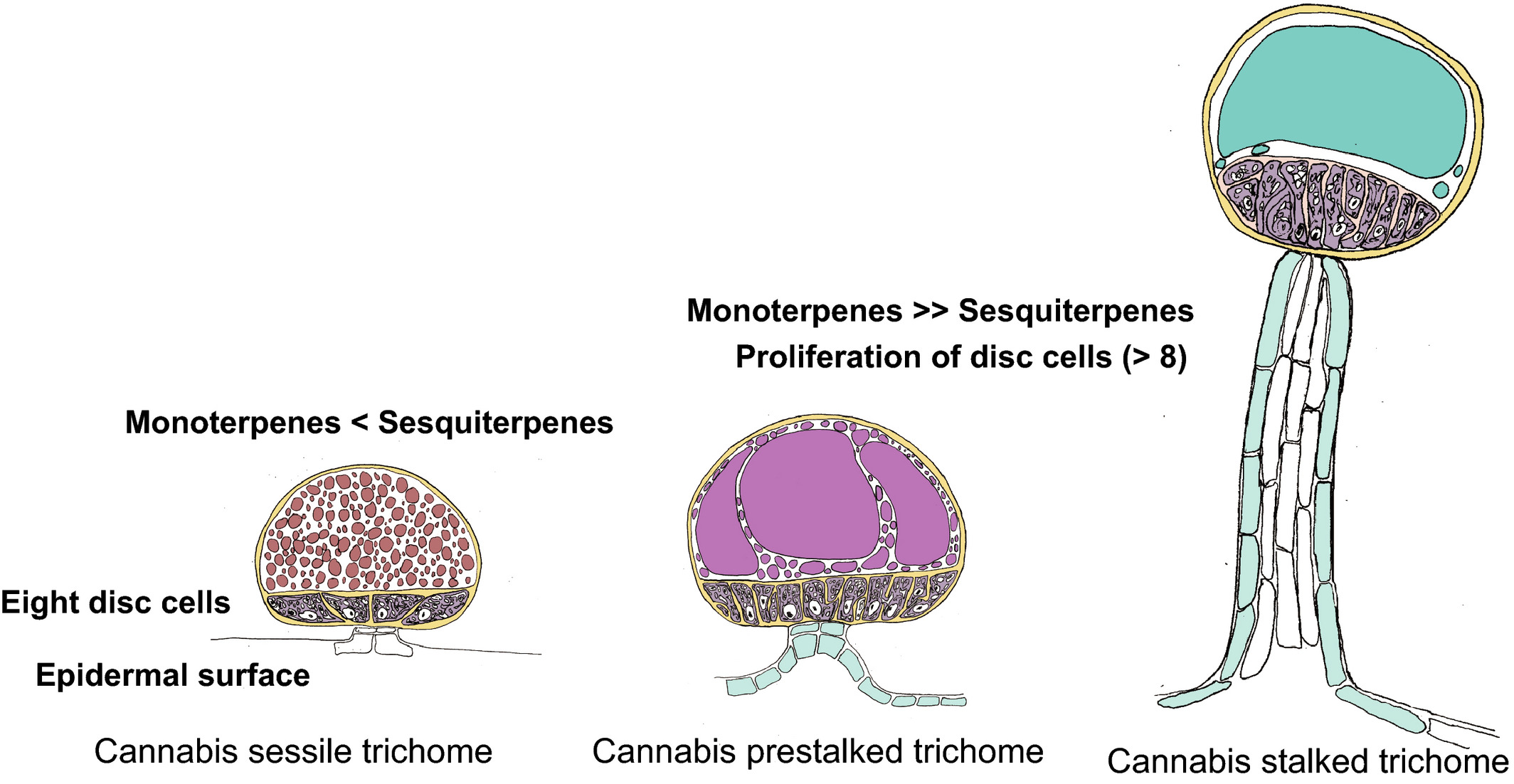Trichomes: The Essential Structures of Cannabis

Trichomes are minute glandular elements on the epidermal surface of cannabis plants. They are of paramount importance in the plant defense system and are mainly responsible for the synthesis of cannabinoids (such as THC and CBD) and terpenes that give cannabis the characteristics of its effects, aroma, and taste. Trichomes make cannabis appear frosty or sticky primarily when it is harvested at its peak potency.
What Are Trichomes?
Trichomes are microscopic, hair-like appendages found on the leaves, stems, and flowers of cannabis plants. They are of different sizes and shapes, some of which look like small crystalline growths, and others which are stalkier or more elongated.
Trichomes are first and foremost involved in synthesizing and storing cannabinoids and terpenes that afford plant protection from herbivores, environmental stresses, and UV irradiation.
Types of Trichomes
There are various types of trichomes on cannabis plants, such as:
Capitate Trichomes: The most frequent form, glandular trichomes with a stalk and a gland head in morphology. These heads of the glands are how the cannabinoids and terpenes are synthesized.
Cystolithic Trichomes: These trichomes are bigger, non-glandular, and more commonly present on the leaf and stem. They don’t contribute much to the production of cannabinoids.
Bulbous Trichomes: Smaller and fewer than capitate trichomes, these are also glandular but give off less cannabinoid and terpene.
Role of Trichomes in Cannabis
Cannabinoid Production: Trichomes are the primary sites of the formation of cannabinoids such as THC and CBD. These compounds mediate the psychoactive and therapeutic properties of cannabis.
Terpene Production: Terpenes, which produce the characteristic aroma and taste of cannabis, are also synthesized in trichomes. The synergy between cannabinoids and terpenes results in different effects and profiles of each strain.
Plant Protection: Trichomes are a defensive trait in the cannabis plant. The adhesive sticky produced by trichomes is protective of the plant against herbivores and insects, and the noxious volatile aroma can act as a repellent to some pests. Furthermore, trichomes can protect the plant from potentially damaging UV radiation.
How Trichomes Impact Cannabis Quality
Cannabis quality and concentration are frequently assessed based on the growth and number of trichomes (plant hairs) present on a given plant. The trichome shape may also be a pointer in determining the harvest time. For example:
Clear Trichomes: As trichomes are clear, cannabis is often immature, and THC levels are still developing.
Cloudy or Milky Trichomes: These suggest that the plant has reached maximum THC production and optimal age for harvest to obtain maximum potency.
Amber Trichomes: It has been observed through the presence of amber trichomes, that the THC is starting to break down into CBN (cannabinol) which is less psychotropic and possesses higher anxiolytic/sedative properties. Many consumers prefer amber trichomes for more relaxing effects.
Trichomes and Extraction
Trichomes are the magic ingredient behind cannabis concentrates and extracts, including hash, live resin, and shatter. Trichomes are isolated from plant material during the extraction process resulting in concentrated products with greater levels of cannabinoids and terpenes. Trichome resin is generally harvested by employing different processes, such as mechanical fractioning, ice-water extraction, or solvent extraction.
Conclusion
Trichomes are the small, but powerful entities responsible for the cannabinoids and terpenes that give rise to the psychoactive, taste, and odor of cannabis. Their use in plant protection coupled with their effect on cannabis potency, makes them a critical part of both production and consumption. By understanding the importance of trichomes, cannabis enthusiasts can better assess the quality of their cannabis and enhance their experience, whether for recreational or medicinal use.
